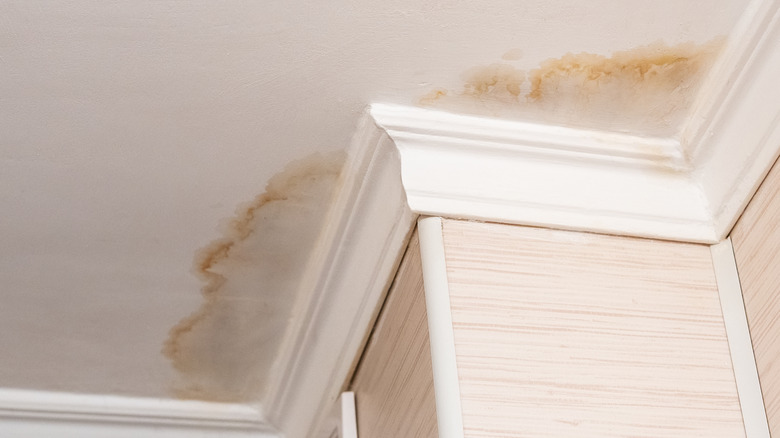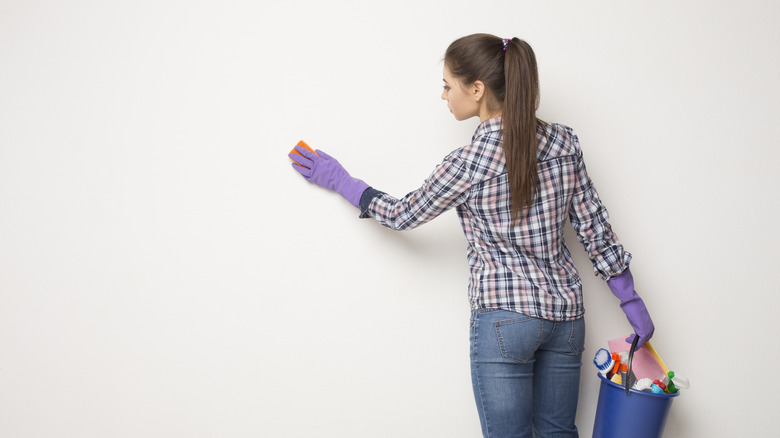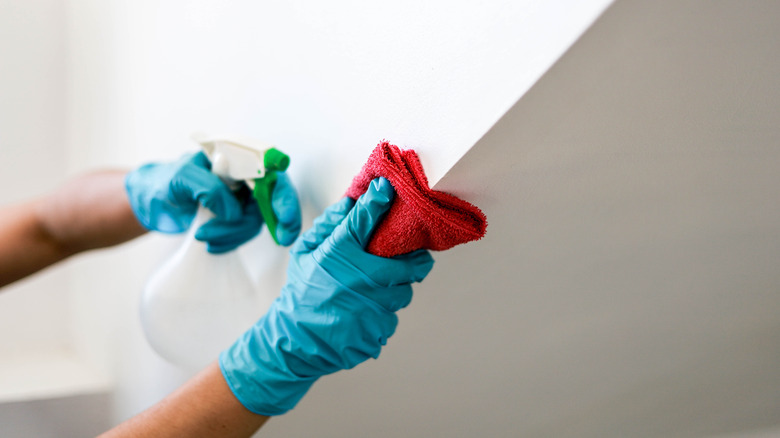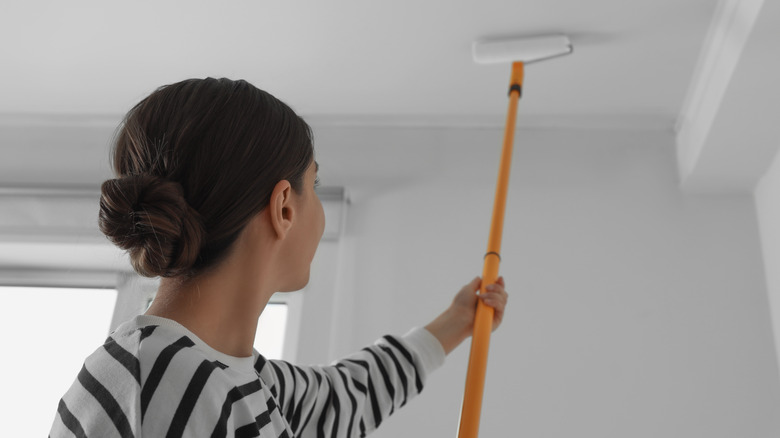How To Get Rid Of Ugly Water Stains On Your Walls And Ceilings
Living in a home means you have to deal with all types of maintenance, like mold in the bathroom, leaky pipes, tarnished hardware, scratched floors, and water stains. Water stains are spots you'll see on the ceiling or walls as a result of a leak from something such as a heating appliance. Additionally, they're noticeable due to the mineral components that create that unappealing color and smell.
If you've found a few pesky water stains throughout your home, we'd like to help! There are a couple of tactics you can try in order to get rid of these blemishes and give your home a fresh new look. Of course, it's always better to resolve any issues that are created by water as soon as possible because they can later lead to the growth of mold and mildew. So if you're ready to get to work, we're eager to reveal a few simple solutions.
Create a cleaning solution for basic removal
According to Performance Painting, you'll need to combine 1 gallon of water, 1 tablespoon of ammonia, 1/4 cup of vinegar, and 1/4 cup of borax into a large container to create your cleaning solution. But before attempting to wipe away your water stains, it's advised to spot-test the mixture on a small section of the wall. If it doesn't affect the paint color, then use large amounts to eliminate all the water stains.
Make sure to avoid working with anything with rough bristles to avoid further damaging your walls. Once you've thoroughly gotten rid of all the visible water stains, you'll have to rinse off the cleaning solution with fresh water. If you've had those blemishes for a while, however, it's not a bad idea to seek professional help to search for any mold that may have grown or the source of water that was leaking to create the stains.
Use a stronger solution in the bathroom
One room you're most likely to see the water stains form is the bathroom. If you're experiencing severe discoloration on your bathroom walls or ceiling, it may be a result of poor ventilation, which allows the humidity to adhere to the structures and create stains. For a simple solution, mix 1 part soap and 2 parts warm water. If you're dealing with something more intense, it's advised to combine vinegar, lemon juice, and baking soda into a spray bottle.
When using the ammonia solution, you'll need a soft cloth or a sponge to work with, which you will want to drench in the mixture before softly rubbing away the stains. To avoid creating drip stains and a bigger mess to clean later, always start at the top of your area and work your way down. If you choose the soap-based cleaning solution, use it to spray the water stains entirely. Then, after about an hour, use a wet cloth to wipe it away. You may need to repeat the process if the water stains aren't gone.
Consider applying a primer and repainting
If using a cleaning solution, however, doesn't solve your problems, another option for getting rid of an unsightly water stain on your wall or ceiling is to paint over it. Chances are good you'll need to paint the entire wall or ceiling since new paint is likely to have a slightly different tinge of color than the old, weathered paint. It's still beneficial to take the time to clean and treat this water stain, but if it's still there, painting is the next step.
Ensure the surface is fully dry and wiped free of any dust or debris. Then use a stain-blocking primer as a first coat. A traditional water-based primer isn't likely capable of covering up the water stain (which typically is a mixture of something else, like fuel, rust, or oil along with the water). Instead, use a water-based acrylic or latex primer. Oil-based stain primers can work well and do a great job on darker-colored walls. Plan on two coats of primer. Then, you'll need one or two top coats depending on the type of paint you purchase.



